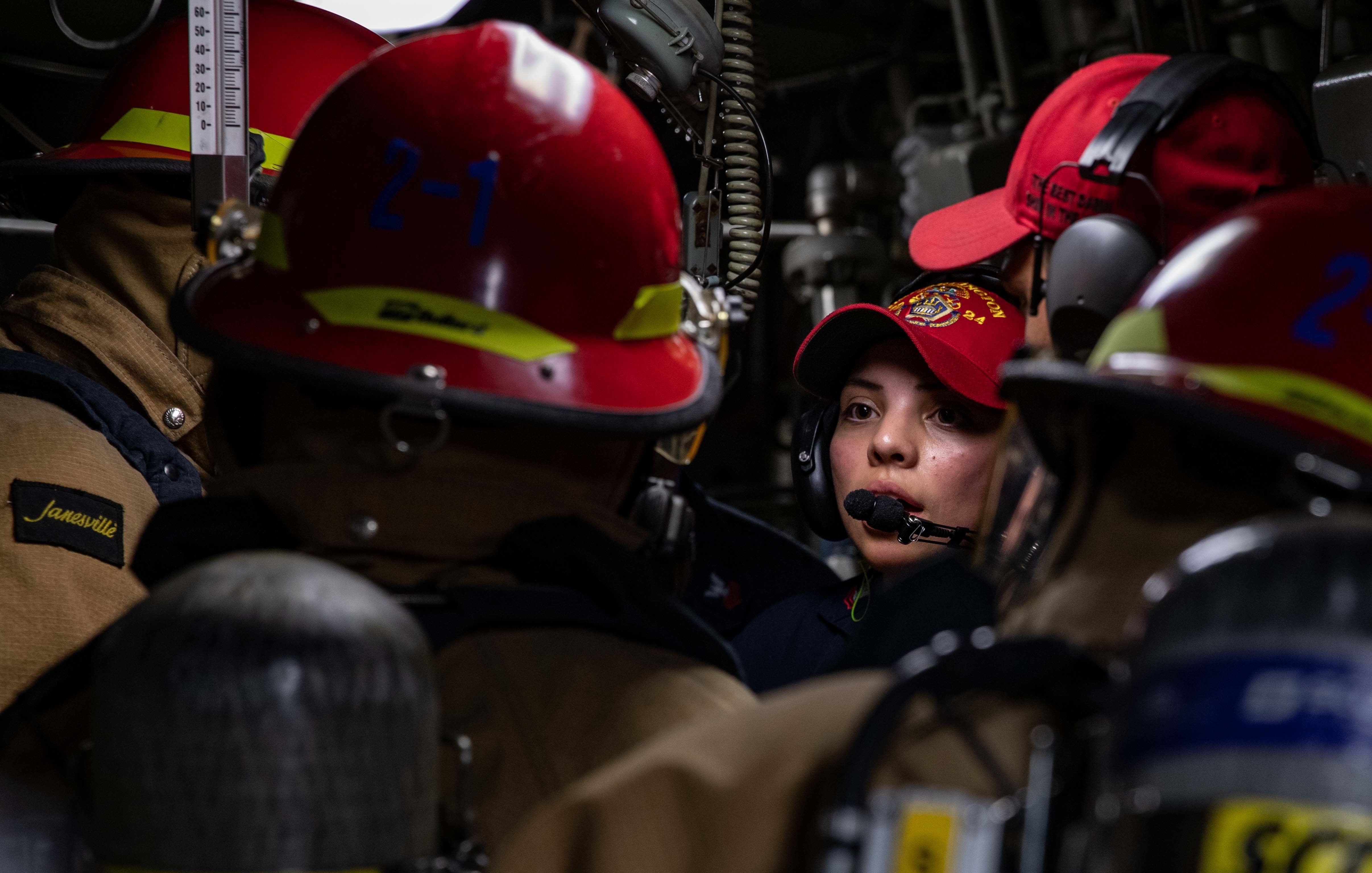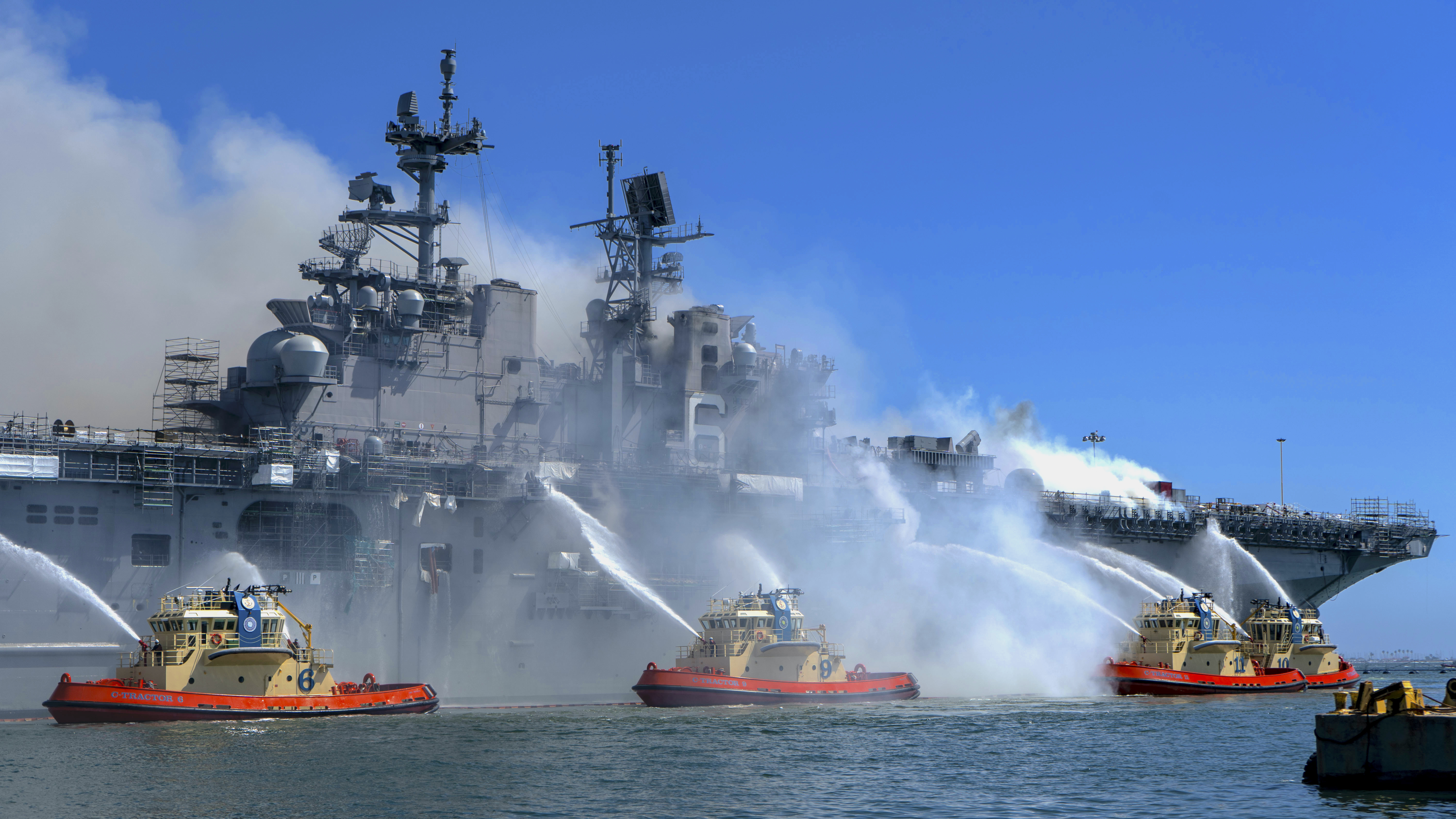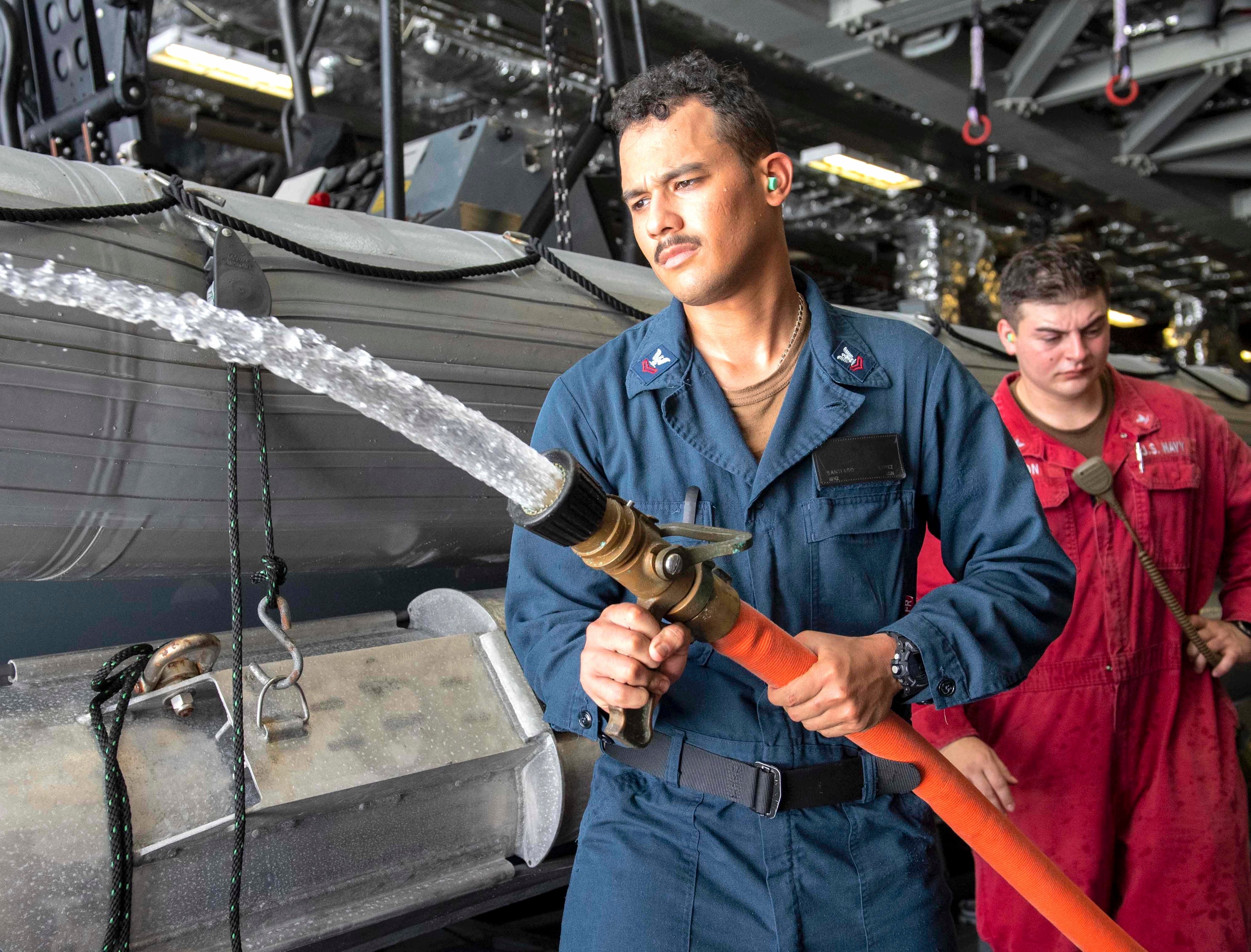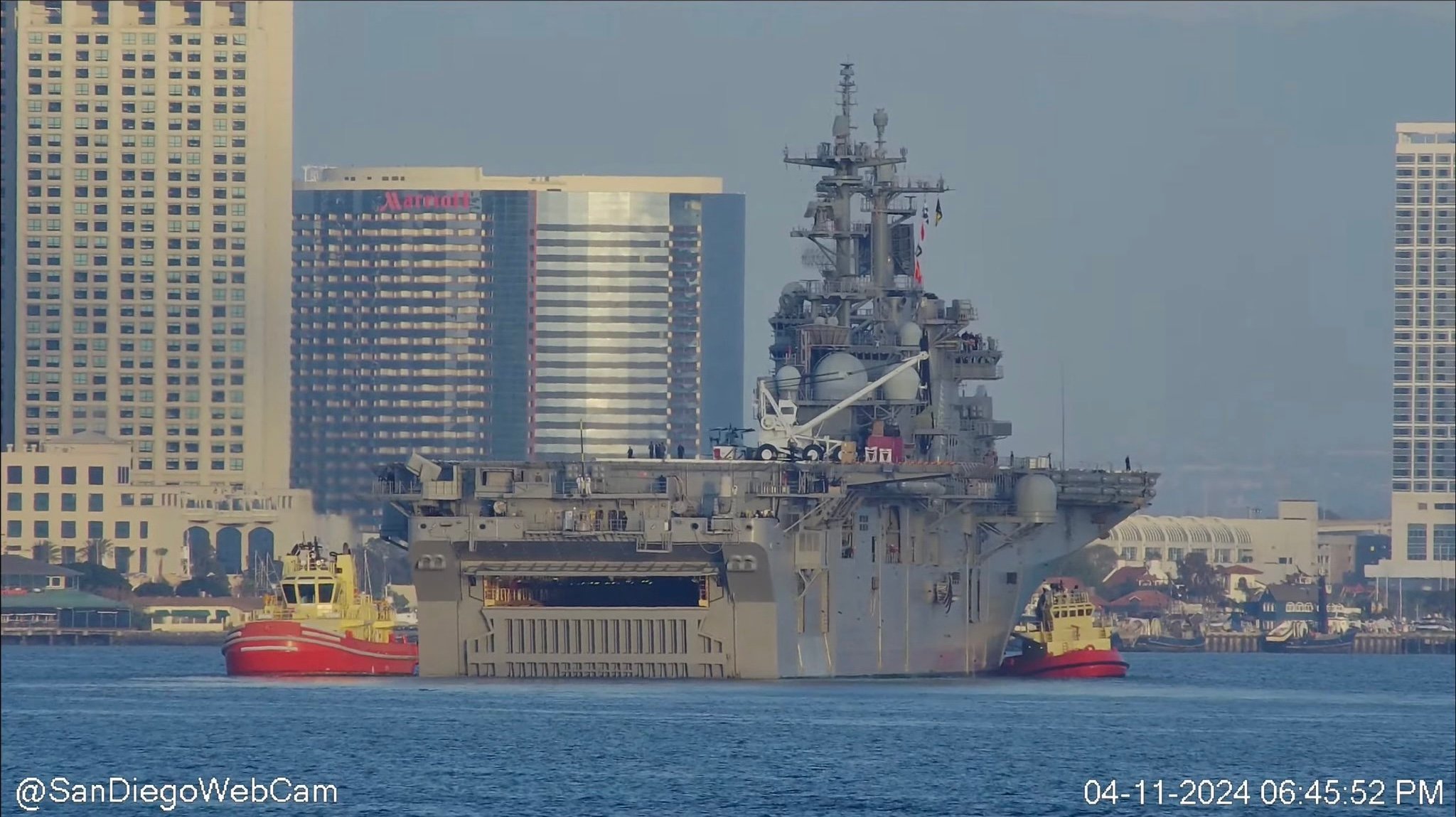
vy Photo
ABOARD THE LITTORAL COMBAT SHIP USS KANSAS CITY, OFF THE COAST OF CALIFORNIA – The Navy has made several adjustments to its practices aboard surface ships and at shipyards in the wake of the fire that gutted an amphibious warship last year.
The service has placed a renewed focus on fire safety and altered how it checks surface ships to ensure they’re ready to fight fires after the former USS Bonhomme Richard (LHD-6) burned for several days last year at Naval Base San Diego in a fire that damaged the ship so badly it had to be scrapped.
“They started beefing up a lot of the requirements,” Senior Chief Petty Officer David Hafoka told reporters aboard USS Kansas City (LCS-22) last week. “One of the big things that I know they’ve changed too is the requirements for roves, which is basically roving the ship and basically making sure everything is good to go. Before, it was kind of left up to the engineering duty officer and the fire marshal.”
“Now – and this is directly from [Naval Surface Forces, Pacific] – you have the engineering duty officer, the fire marshal, the command duty officer and the section leader. They all have to rove. They all have to rove three times a day and they can’t do them all together. They have to be spaced out so far apart,” he continued. “They have to rove through all the engineering spaces and they’re focusing on the fire fighting equipment, making sure that the ship is able and they’re capable of conducting, or combatting, or defending the ship in the event of a damage control incident.”
Under the changes, a sailor performs a rove of the ship every two hours to check various spaces and make sure the vessel is capable of fighting a fire should one break out.
“So it’s like every two hours, there’s somebody that’s up and roving and making sure. And this is in addition to the internal rover that they have, that is dispatched, that personnel and the watches that are already established,” he said.
Fire marshals also need to have more training as a result of the Bonhomme Richard fire, Hafoka said, and the Navy has instituted more checks for ships that are heading into the shipyards for maintenance. The service is emphasizing that sailors need to understand what is going on aboard their ship, even when it’s in port for maintenance, and have the appropriate labels marked where necessary, according to Hafoka.

“There’s a lot of additional requirements for when you go into the yards. There’s briefs that have to be conducted by the entities that are actually conducting the yard period,” he said.
“So say for instance like if you’re running services through a door, there’s requirements for running them through the door. They have to have quick disconnect labels,” Hafoka added. “They have to be labeled. They have to be able to do it. A lot of times they get lazy and they’re just … running it.”
Navy ships are more vulnerable to fire damage during maintenance periods, USNI News previously reported. This summer, a hot work fire broke out aboard guided-missile cruiser USS Gettysburg (CG-64) while it was at the BAE Systems repair yard in Norfolk, Va.
In addition to performing more roves, the Navy is also assessing the possibility of extending its recruit training from the current eight-week course to ten weeks, so sailors can receive more firefighting training, according to Rear Adm. Robert Nowakowski, the deputy commander of Navy Recruiting Command and Naval Education and Training Command Force Development. Nowakowski is also currently leading a task force aimed at improving the Littoral Combat Ship program.
“When they get to the ship, usually they’re going to have to do a little bit more training anyway, so we’re going to try to front-load that a little bit more up in the design process so that they get more training before they get to the ship,” Nowakowski told reporters aboard Kansas City.

“We got to make sure that those sailors are ready on day one,” he said. “And how do you best do that? You train them before they arrive to the ship. Now, they’re already getting fire fighting training at [Recruit Training Command], Great Lakes. That’s great, but we want to give them more.”
Working to prevent fires from breaking out is always the ideal way to fight them, Sal Mercogliano, an associate professor of history at Campbell University, told USNI News.
“If you can catch it before it starts or when it’s small, that’s the best time. And obviously, the way you do that is through monitoring… whether it’s electric sensors, smoke detectors, or physical roaming patrols. That’s the best way to always fight it,” Mercogliano said.
“That’s a very proactive method. I mean I think that systems works for them very well. The problem you have is, okay what if you don’t catch it in time, or what if it’s a fast-growing fire, or if it’s an arson – which is going to be accelerated – how do you fight a fire on a ship coming out of a repair availability that has it’s fire main system compromised?”
While the Navy has yet to release its investigation into the Bonhomme Richard, the service has charged a sailor with arson for the fire aboard the ship.
Mercogliano said other concerns for the Navy are how it works with local firefighting entities – which typically don’t have the training to fight fires aboard ships – to fight fires in port and how sailors will fight fires at sea during a conflict.
“The Navy being proactive in putting roving patrols out is great, but I think we also need to look at how we can take the lessons from the Bonhomme Richard and apply them, for example, to a wartime scenario, where a ship at sea suffers a similar damage to Bonhomme Richard,” he said. “And you don’t have the luxury of calling in aid from ashore or evacuating the vessel. How do you fight that fire afloat like that? And that’s the kind of lessons we should be taking. You know, using Bonhomme Richard as the lesson.”





